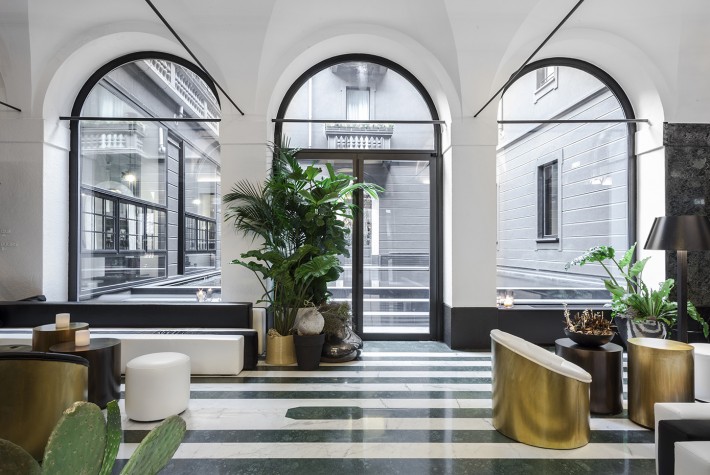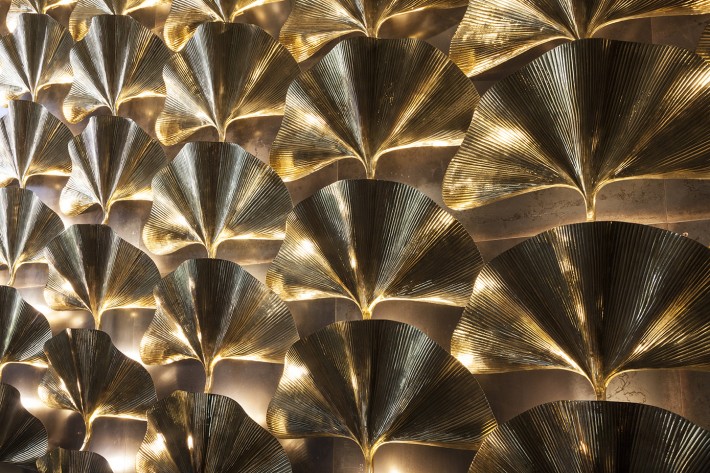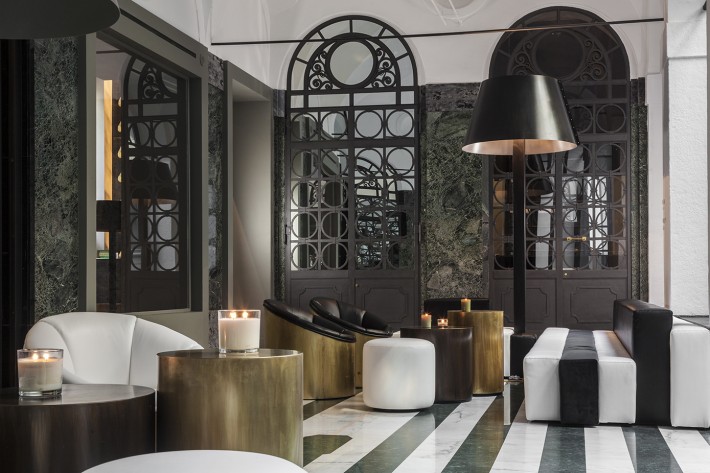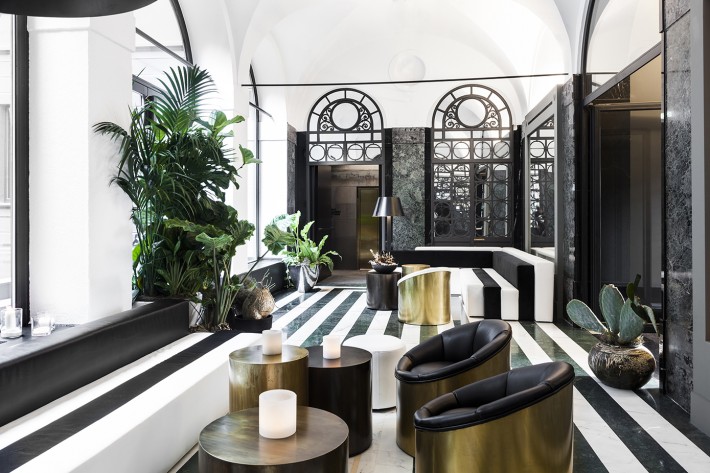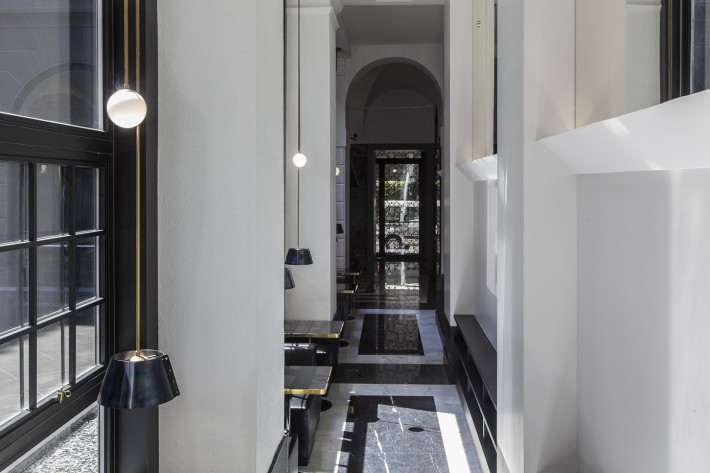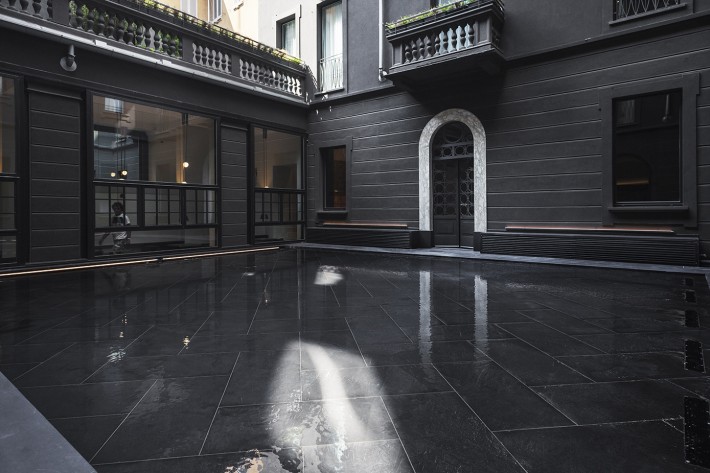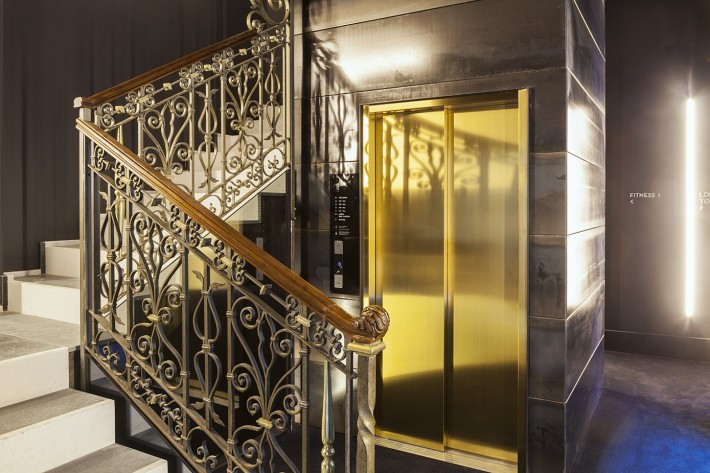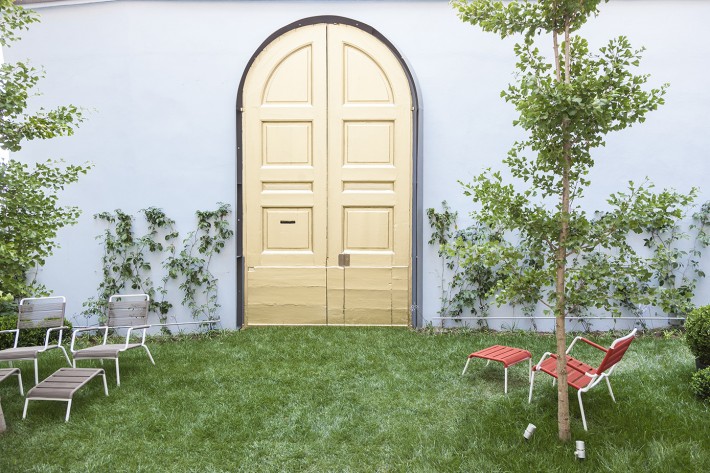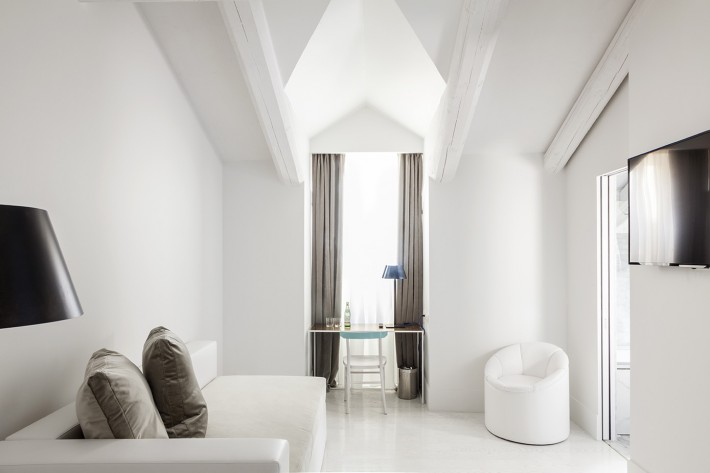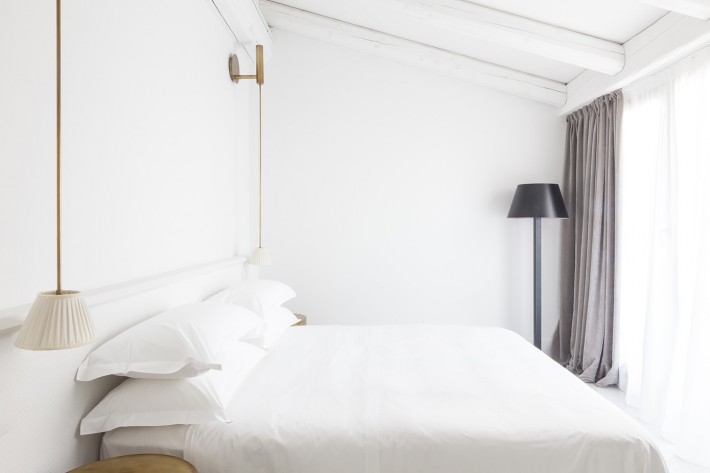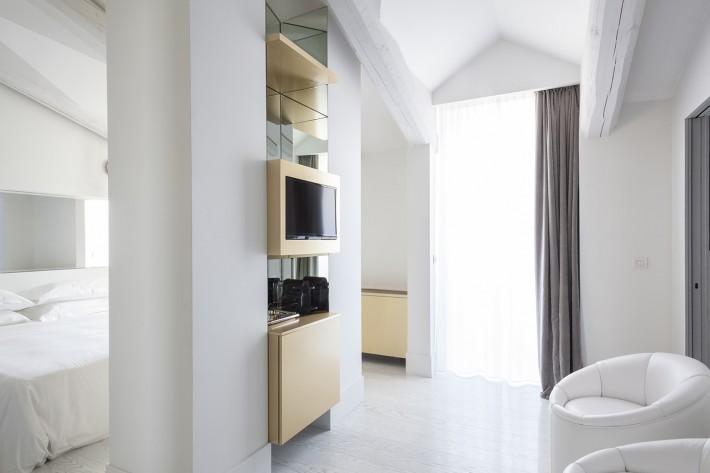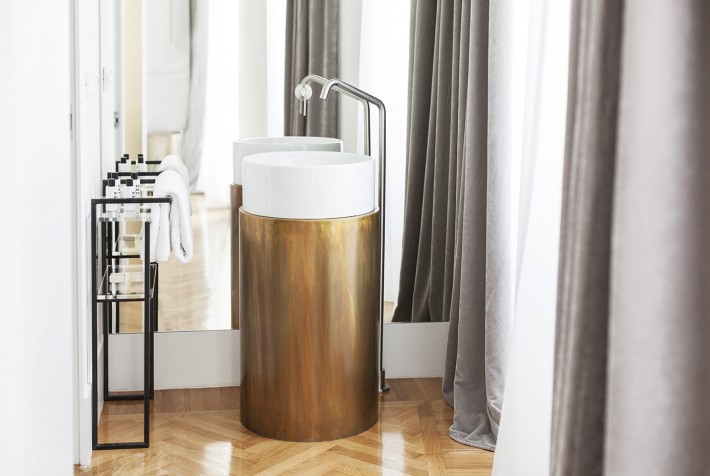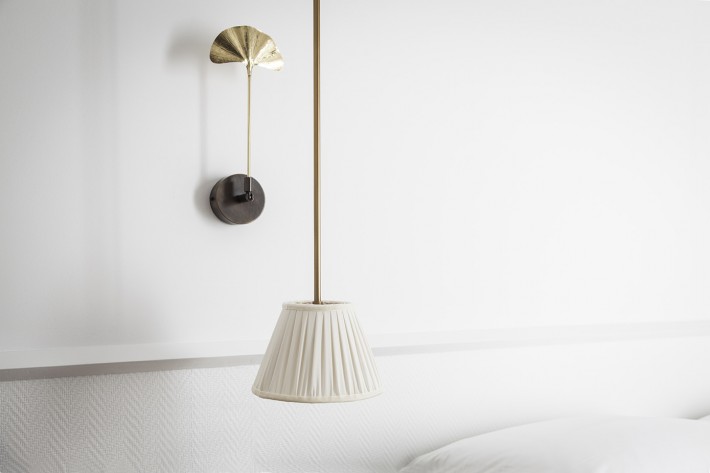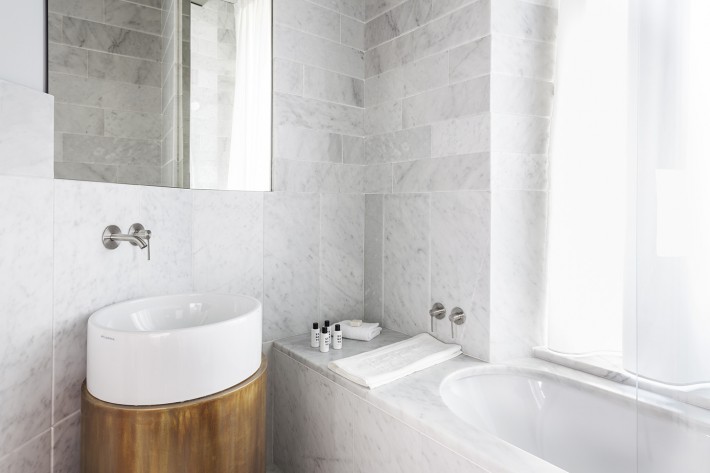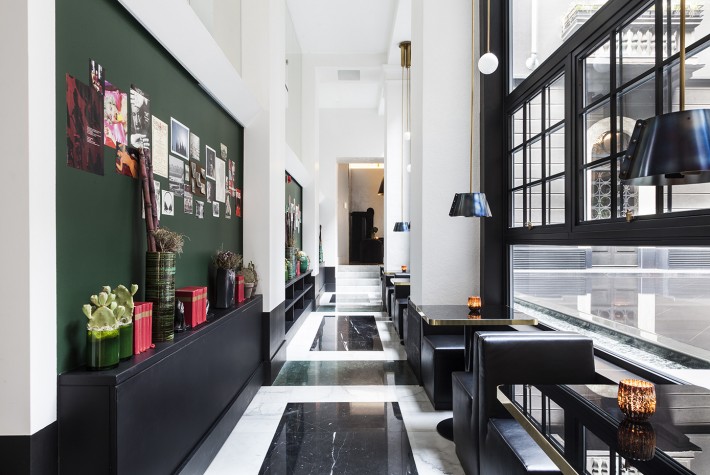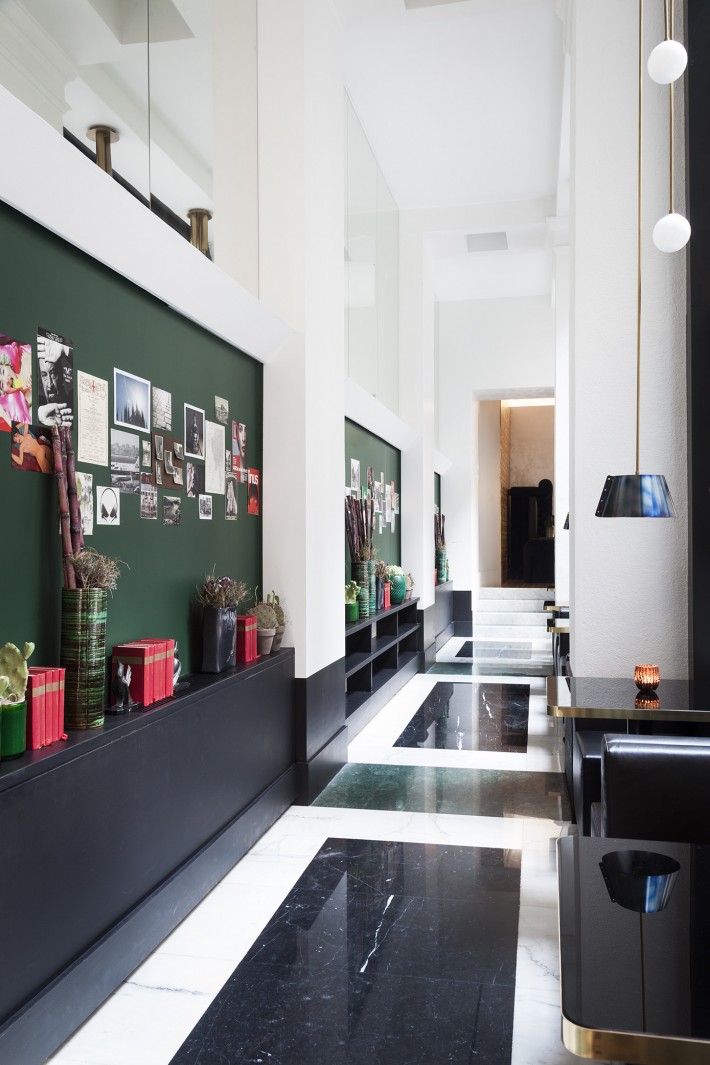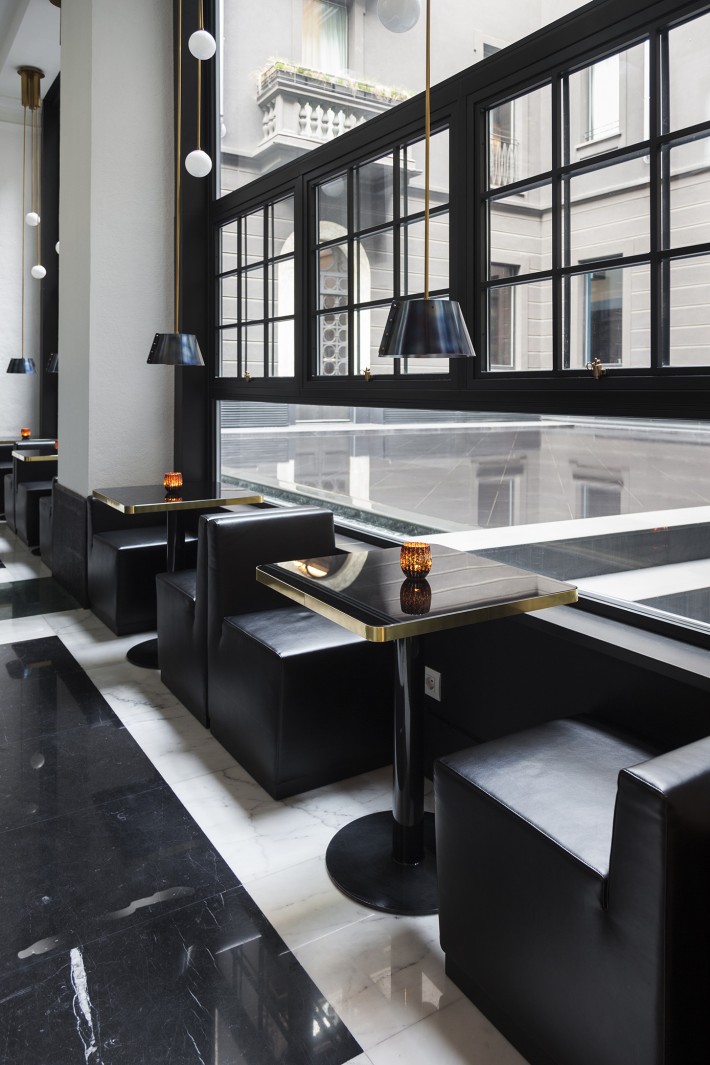22 March 2016
If it were not for the gilded Ginkgo biloba leaf that stands out on the white façade you might think you were looking at one of those neoclassical townhouses typical of Lombard cities. Up until a couple of years ago, in fact, the building at no. 22 Via Senato was a five-story private residence, owned by the Ranza family for four generations. The position is a strategic one—a short walk from the fashion district and San Babila—but away from the chaos of other central zones. With the aim of giving the city a special place, Milanese to the core, the Ranza family entrusted its conversion into a hotel to the architect Alessandro Bianchi, giving him responsibility for the entire project: from the structure to the furnishings, all the way down to the details of the 42 rooms (plus two junior suites). The result is a somewhat “anachronistic” hotel, as Bianchi himself likes to describe it, “discreet, sober and elegant, but always in touch with the world”: a concentrate of style and harmony that plays on the chromatic contrast of black and white, used to set off the brass fixtures, the velvets, the wooden elements and the wrought iron. A homage to the Lombard provincial capital can be found in other details too: in the laser-cut metal doors of the entrance, which allude to a gate designed by Portaluppi for a building in Porta Venezia, and in the shelf that runs along the corridor as far as the bistro, lined with pictures and books on the city and its most illustrious inhabitants. And again, in the marble floor, whose pattern is based on the biscione, or serpent of the Visconti, as well as in the clips from films in which Milan plays a leading role (from the sixties to the present day) that are shown on the screen located in the Saletta Chesterfield. It is the Hotel Senato’s ambition to reflect life in Milan, something which, above and beyond its more glamorous aspects, can also signify relaxing in the small and quiet garden at the back, enclosed by a wall and the building’s original front door, moved here and painted gold, or in the solarium on the top floor, from where it is possible to see the Madonnina, the famous statue of the Virgin Mary on top of the cathedral.
